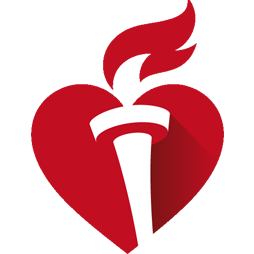Final ID: MP22
A Measurement Model of Socioeconomic Status and its Association with Cardiovascular Disease in the Hispanic Community Health Study/Study of Latinos
Abstract Body: Objectives: Low socioeconomic status (SES) is consistently associated with adverse cardiovascular health. Three key indicators are typically used as proxies for SES: income, education, and occupation. However, these indicators may not fully capture the unique sociodemographic features relevant to the SES of Hispanics/Latinos in the U.S. This study aims to expand the traditional SES model by identifying and incorporating additional features specific to Hispanic/Latino persons, providing a more comprehensive assessment of SES and its relationship with cardiovascular disease (CVD).
Methods: The Hispanic Community Health Study/Study of Latinos (HCHS/SOL) is a community-based longitudinal cohort study of 16,415 adults self-identifying as Hispanic/Latino, enrolled from 2008-2011 from four U.S. urban communities. We utilized a multiple indicator multiple cause (MIMIC) model to identify formative and reflective indicators of a latent variable for SES. CVD was ascertained by self-report during the second in-person clinic examination from 2014-2017 (V2; N=11,623) and was defined as having had a heart attack, stroke, or angioplasty, stent, or bypass procedure. A survey logistic regression model was then used to examine the association of the latent SES with CVD at V2. Models were adjusted for age, sex, and study site.
Results: Significant formative indicators of the SES latent variable included education level, whether the highest level of education was obtained in the US, employment status, and age at immigration (included in a second model with immigrants only; n=9,623). Significant reflective indicators of the SES latent variable included income, the MacArthur SES ladder, and affluence level. The measurement model demonstrated good fit to the data (RMSEA=0.016; CFI=0.984, SRMR=0.02). The SES latent variable was associated with CVD (OR=0.70, 95% CI 0.58, 0.84; for immigrants only OR=0.64, 95% CI 0.53-0.77).
Conclusions: Incorporating indicators relevant to Hispanic/Latino populations provides a more comprehensive assessment of SES with potentially improved validity. The latent SES variable, including factors such as education location and age at immigration, was significantly associated with lower odds of cardiovascular disease. These findings highlight the importance of using a culturally-tailored SES framework when examining health outcomes in Hispanics/Latinos.
Methods: The Hispanic Community Health Study/Study of Latinos (HCHS/SOL) is a community-based longitudinal cohort study of 16,415 adults self-identifying as Hispanic/Latino, enrolled from 2008-2011 from four U.S. urban communities. We utilized a multiple indicator multiple cause (MIMIC) model to identify formative and reflective indicators of a latent variable for SES. CVD was ascertained by self-report during the second in-person clinic examination from 2014-2017 (V2; N=11,623) and was defined as having had a heart attack, stroke, or angioplasty, stent, or bypass procedure. A survey logistic regression model was then used to examine the association of the latent SES with CVD at V2. Models were adjusted for age, sex, and study site.
Results: Significant formative indicators of the SES latent variable included education level, whether the highest level of education was obtained in the US, employment status, and age at immigration (included in a second model with immigrants only; n=9,623). Significant reflective indicators of the SES latent variable included income, the MacArthur SES ladder, and affluence level. The measurement model demonstrated good fit to the data (RMSEA=0.016; CFI=0.984, SRMR=0.02). The SES latent variable was associated with CVD (OR=0.70, 95% CI 0.58, 0.84; for immigrants only OR=0.64, 95% CI 0.53-0.77).
Conclusions: Incorporating indicators relevant to Hispanic/Latino populations provides a more comprehensive assessment of SES with potentially improved validity. The latent SES variable, including factors such as education location and age at immigration, was significantly associated with lower odds of cardiovascular disease. These findings highlight the importance of using a culturally-tailored SES framework when examining health outcomes in Hispanics/Latinos.
More abstracts on this topic:
Ablation vs. Antiarrhythmic Drugs in Atrial Fibrillation: Real-World Treatment Gaps, Outcomes, and Equity Challenges
Rauf Saman, Iqbal Fatima, Bhatti Shehzeen Dua, Masood Natasha, Qureshi Muhammad Maaz, Nawaz Muhammad Hassan
Association between Population Level Social Risk Factors and Prevalence of StrokeEgede Leonard, Walker Rebekah, Campbell Jennifer

